-
 Bitcoin
Bitcoin $77,174.4332
-6.66% -
 Ethereum
Ethereum $1,513.9694
-15.12% -
 Tether USDt
Tether USDt $0.9994
0.00% -
 XRP
XRP $1.7976
-13.35% -
 BNB
BNB $546.9143
-6.92% -
 USDC
USDC $1.0000
0.01% -
 Solana
Solana $102.1830
-13.15% -
 TRON
TRON $0.2263
-5.32% -
 Dogecoin
Dogecoin $0.1407
-13.87% -
 Cardano
Cardano $0.5506
-13.28% -
 UNUS SED LEO
UNUS SED LEO $8.8923
-1.36% -
 Toncoin
Toncoin $3.0651
-6.63% -
 Chainlink
Chainlink $10.9654
-12.57% -
 Stellar
Stellar $0.2233
-10.13% -
 Avalanche
Avalanche $15.7971
-7.68% -
 Shiba Inu
Shiba Inu $0.0...01102
-8.27% -
 Sui
Sui $1.8598
-12.98% -
 MANTRA
MANTRA $6.1562
-1.39% -
 Hedera
Hedera $0.1389
-10.82% -
 Polkadot
Polkadot $3.4511
-12.05% -
 Dai
Dai $1.0001
0.02% -
 Bitcoin Cash
Bitcoin Cash $265.0446
-9.69% -
 Litecoin
Litecoin $68.1930
-15.63% -
 Ethena USDe
Ethena USDe $0.9987
-0.03% -
 Bitget Token
Bitget Token $3.9224
-11.37% -
 Pi
Pi $0.5642
-11.92% -
 Monero
Monero $195.3244
-8.26% -
 Hyperliquid
Hyperliquid $10.5437
-7.47% -
 Uniswap
Uniswap $4.9997
-12.42% -
 OKB
OKB $49.8749
-7.33%
What is multi-signature (Multisig)?
Multisig wallets, requiring multiple private keys for transaction authorization, significantly enhance cryptocurrency security by reducing single points of failure. Various configurations offer differing levels of security and convenience, demanding careful consideration of risks and limitations before implementation.
Mar 21, 2025 at 06:15 am
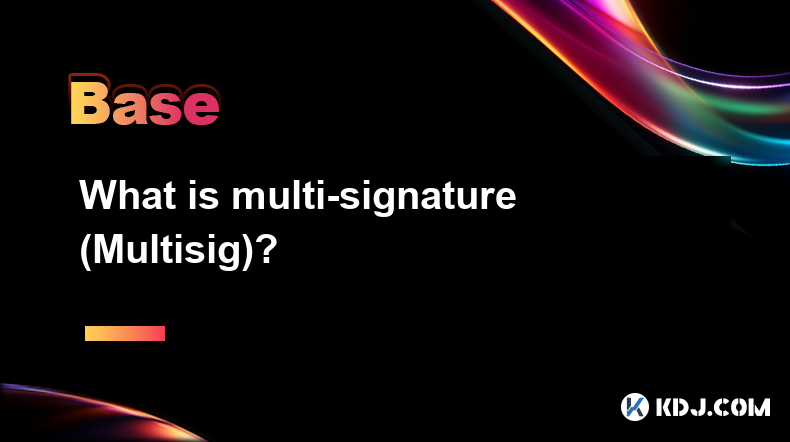
Key Points:
- Multi-signature (multisig) wallets require multiple private keys to authorize a transaction, enhancing security.
- Different multisig setups offer varying levels of security and control.
- Implementing multisig involves understanding the number of required signatures and the total number of keys.
- Multisig is used for enhanced security in various crypto contexts, including exchanges, custody solutions, and personal wallets.
- Understanding the risks and limitations of multisig is crucial for effective implementation.
What is Multi-signature (Multisig)?
Multi-signature, or multisig, in the cryptocurrency world refers to a transaction authorization mechanism requiring multiple private keys to approve a transaction before it's executed. This differs from standard single-signature wallets where only one private key is needed. Multisig significantly boosts security by introducing redundancy and reducing the risk of unauthorized access or theft. The loss or compromise of a single private key doesn't necessarily lead to the loss of funds.
How Does Multisig Work?
A multisig wallet is configured with a specified number of "M of N" signatures. This means "M" out of "N" total keys must approve a transaction for it to be valid and broadcast to the blockchain. For example, a 2-of-3 multisig setup requires any two out of three designated private keys to sign the transaction before it can be executed. This setup provides a robust security layer, as the compromise of a single key won't result in the loss of funds.
Types of Multisig Setups:
The flexibility of multisig allows for various configurations to meet specific security and access control needs. Common setups include:
- 2-of-3: Two out of three keys are needed to authorize a transaction. This offers a good balance between security and convenience.
- 3-of-5: Three out of five keys are required, providing even greater security but requiring more coordination among key holders.
- 1-of-2: This setup, while providing some security benefits over single signature, is less secure than others as only one key is required.
The optimal setup depends on the risk tolerance and operational requirements of the user or organization.
Implementing a Multisig Wallet:
Setting up a multisig wallet usually involves these steps:
- Choosing a provider: Several cryptocurrency exchanges and wallet providers support multisig functionality. Carefully research providers and choose a reputable one.
- Generating keys: You will need to generate the required number of private keys for your chosen multisig configuration. Securely store these keys offline.
- Configuring the wallet: Follow the provider's instructions to configure the multisig wallet with the generated keys and your desired "M of N" configuration.
- Testing the setup: Before using the multisig wallet for significant transactions, test it with small amounts of cryptocurrency to ensure it's functioning correctly.
Remember to meticulously document all keys and their locations.
Security Benefits of Multisig:
The primary advantage of multisig is enhanced security. It mitigates the risk associated with single points of failure inherent in single-signature wallets. The requirement of multiple signatures makes it exponentially more difficult for attackers to gain unauthorized access to funds.
Use Cases for Multisig:
Multisig wallets are used in a wide range of scenarios within the crypto ecosystem:
- Exchanges: Many cryptocurrency exchanges utilize multisig to secure user funds, reducing the risk of theft from internal breaches or hacking.
- Custodial services: Companies offering cryptocurrency custody solutions often employ multisig to enhance the security of their clients' assets.
- Personal wallets: Individuals may use multisig to protect their holdings, particularly for large amounts of cryptocurrency. This offers increased protection against theft or loss of a single key.
- Team management: Multiple team members can control a single wallet, requiring collaboration for transactions. This can be useful for shared company funds.
Risks and Limitations of Multisig:
While multisig offers substantial security benefits, it's not without limitations:
- Complexity: Setting up and managing a multisig wallet can be more complex than a single-signature wallet, requiring careful coordination among key holders.
- Coordination: Transactions require approval from multiple parties, which can slow down the process. This may be inconvenient for time-sensitive transactions.
- Key loss: If a sufficient number of keys are lost or compromised, accessing the funds becomes impossible. Therefore, secure key management is paramount.
- Provider risk: Relying on a third-party provider introduces the risk of the provider being compromised or failing.
Frequently Asked Questions:
Q: What happens if I lose one of my multisig keys?
A: The impact depends on your multisig setup. If you have a 2-of-3 setup and lose one key, you still have one remaining key to use with another. However, if you lose enough keys to fall below the required number ("M"), you'll lose access to the funds.
Q: Is multisig more secure than a single-signature wallet?
A: Generally, yes. Multisig significantly reduces the risk of unauthorized access compared to single-signature wallets. The requirement of multiple signatures creates a much higher barrier to theft.
Q: How do I choose the right multisig setup for my needs?
A: The optimal setup depends on your risk tolerance and operational needs. Consider the trade-off between security and convenience. A 2-of-3 setup offers a good balance, while 3-of-5 offers greater security but requires more coordination.
Q: Can I use multisig with any cryptocurrency?
A: Not all cryptocurrencies support multisig functionality. Check the specific capabilities of the cryptocurrency and wallet provider you intend to use.
Q: What are the costs associated with using multisig?
A: Some providers may charge fees for setting up and managing multisig wallets. Transaction fees might also be slightly higher than with single-signature transactions.
Disclaimer:info@kdj.com
The information provided is not trading advice. kdj.com does not assume any responsibility for any investments made based on the information provided in this article. Cryptocurrencies are highly volatile and it is highly recommended that you invest with caution after thorough research!
If you believe that the content used on this website infringes your copyright, please contact us immediately (info@kdj.com) and we will delete it promptly.
- Ethereum and Solana Prices Collapsed Monday Morning as President Trump's Sweeping New Tariffs Sparked a Global Market Selloff
- 2025-04-07 20:35:12
- GameStop Corp. (NYSE: GME) Announces Bitcoin Purchase Plans, Sparking Stock Rally
- 2025-04-07 20:35:12
- New Plan to Stabilize Pi Coin Price Gains Attention
- 2025-04-07 20:30:11
- Who hasn't dreamed of finding the next 1000x crypto? Imagine turning a small investment into a huge fortune overnight.
- 2025-04-07 20:30:11
- U.S. President Donald Trump’s sweeping reciprocal tariffs have triggered fresh panic across global financial markets.
- 2025-04-07 20:25:12
- Solana (SOL) Plunges Below $100, Memecoin Mania Cools
- 2025-04-07 20:25:12
Related knowledge
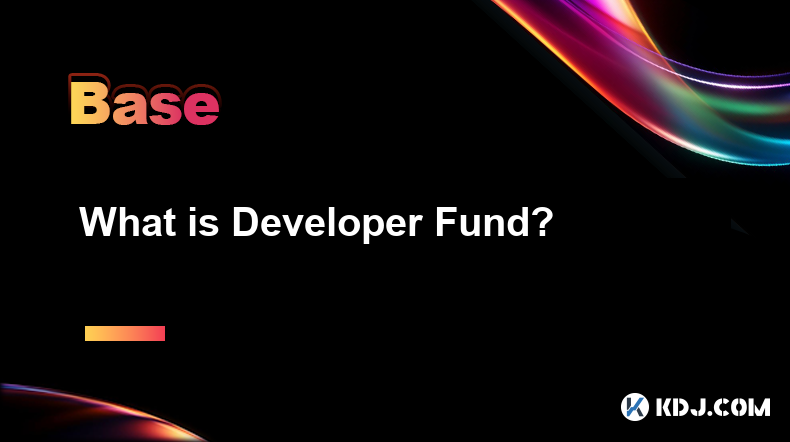
What is Developer Fund?
Apr 07,2025 at 08:21pm
A Developer Fund in the cryptocurrency ecosystem is a pool of resources, typically in the form of cryptocurrency, set aside to support the development and maintenance of a blockchain project. These funds are crucial for the growth and sustainability of blockchain networks, as they enable developers to work on improving the protocol, fixing bugs, and add...
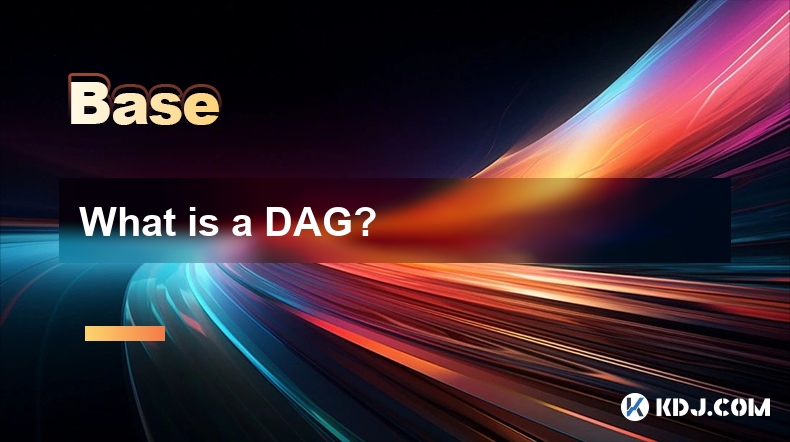
What is a DAG?
Apr 07,2025 at 08:15pm
A Directed Acyclic Graph, commonly known as a DAG, is a fundamental concept in the world of cryptocurrencies and blockchain technology. Unlike traditional blockchain structures that rely on a linear chain of blocks, a DAG uses a more complex and interconnected network of nodes. This structure allows for faster transaction processing and scalability, mak...
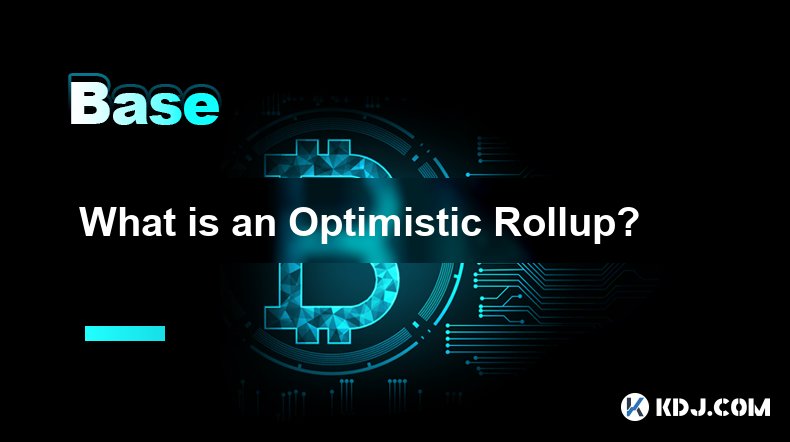
What is an Optimistic Rollup?
Apr 07,2025 at 07:57pm
An Optimistic Rollup is a layer 2 scaling solution designed to enhance the efficiency and scalability of blockchain networks, particularly Ethereum. This technology aims to process transactions off the main Ethereum chain, thereby reducing congestion and lowering transaction fees. The term 'optimistic' stems from the approach taken by these rollups, whi...
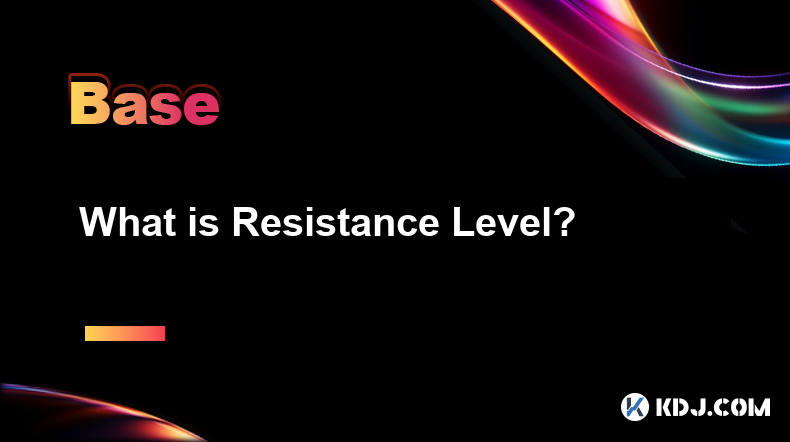
What is Resistance Level?
Apr 07,2025 at 06:57pm
What is Resistance Level?In the world of cryptocurrency trading, understanding technical analysis is crucial for making informed decisions. One of the key concepts in technical analysis is the resistance level. This term refers to a price point at which an asset tends to encounter selling pressure, preventing it from rising further. In this article, we ...
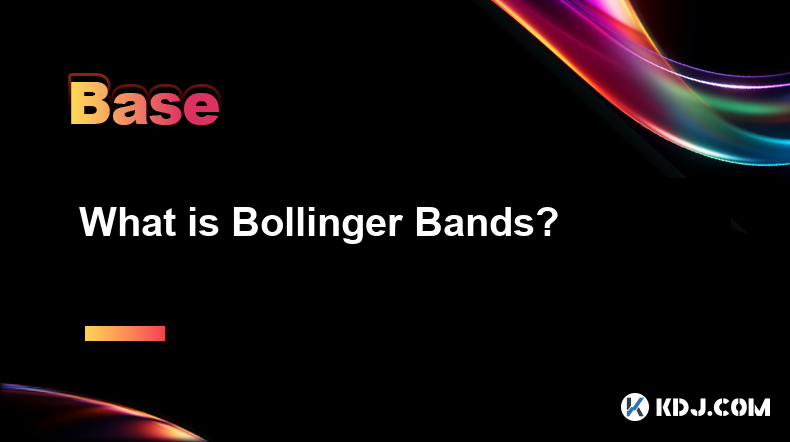
What is Bollinger Bands?
Apr 07,2025 at 08:01pm
What is Bollinger Bands? Bollinger Bands are a technical analysis tool developed by John Bollinger in the 1980s. They are used to measure market volatility and identify potential overbought or oversold conditions in the price of an asset, including cryptocurrencies. The bands consist of a middle band, which is typically a simple moving average (SMA), an...
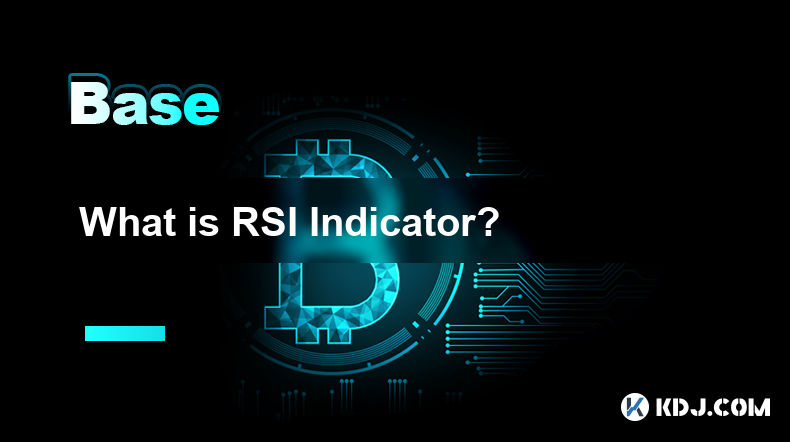
What is RSI Indicator?
Apr 07,2025 at 07:49pm
The Relative Strength Index (RSI) is a popular momentum oscillator used in technical analysis to measure the speed and change of price movements of a cryptocurrency. Developed by J. Welles Wilder Jr., the RSI is typically displayed as an oscillator (a line graph that moves between two extremes) and can range from 0 to 100. It is primarily used to identi...

What is Developer Fund?
Apr 07,2025 at 08:21pm
A Developer Fund in the cryptocurrency ecosystem is a pool of resources, typically in the form of cryptocurrency, set aside to support the development and maintenance of a blockchain project. These funds are crucial for the growth and sustainability of blockchain networks, as they enable developers to work on improving the protocol, fixing bugs, and add...

What is a DAG?
Apr 07,2025 at 08:15pm
A Directed Acyclic Graph, commonly known as a DAG, is a fundamental concept in the world of cryptocurrencies and blockchain technology. Unlike traditional blockchain structures that rely on a linear chain of blocks, a DAG uses a more complex and interconnected network of nodes. This structure allows for faster transaction processing and scalability, mak...

What is an Optimistic Rollup?
Apr 07,2025 at 07:57pm
An Optimistic Rollup is a layer 2 scaling solution designed to enhance the efficiency and scalability of blockchain networks, particularly Ethereum. This technology aims to process transactions off the main Ethereum chain, thereby reducing congestion and lowering transaction fees. The term 'optimistic' stems from the approach taken by these rollups, whi...

What is Resistance Level?
Apr 07,2025 at 06:57pm
What is Resistance Level?In the world of cryptocurrency trading, understanding technical analysis is crucial for making informed decisions. One of the key concepts in technical analysis is the resistance level. This term refers to a price point at which an asset tends to encounter selling pressure, preventing it from rising further. In this article, we ...

What is Bollinger Bands?
Apr 07,2025 at 08:01pm
What is Bollinger Bands? Bollinger Bands are a technical analysis tool developed by John Bollinger in the 1980s. They are used to measure market volatility and identify potential overbought or oversold conditions in the price of an asset, including cryptocurrencies. The bands consist of a middle band, which is typically a simple moving average (SMA), an...

What is RSI Indicator?
Apr 07,2025 at 07:49pm
The Relative Strength Index (RSI) is a popular momentum oscillator used in technical analysis to measure the speed and change of price movements of a cryptocurrency. Developed by J. Welles Wilder Jr., the RSI is typically displayed as an oscillator (a line graph that moves between two extremes) and can range from 0 to 100. It is primarily used to identi...
See all articles





















































































